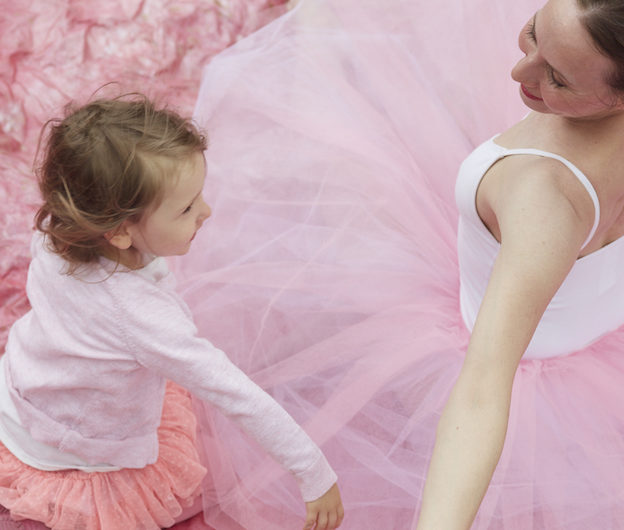Ballerina Blog
Information & insights for graceful living.

Ballet & Empathy: Why dancing helps develop emotional radar
September 14, 2016[et_pb_section admin_label=”section”][et_pb_row admin_label=”row”][et_pb_column type=”4_4″][et_pb_text admin_label=”post copy” background_layout=”light” text_orientation=”left” use_border_color=”off” border_color=”#ffffff” border_style=”solid”]
A recent study showed ballet dancers exhibited more emotional sensitivity when viewing others. It wasn’t only that they perceived emotional content in a more detailed way–their automatic sweat responses (which indicate emotional experiences) were also greater than in other groups. In other words, they actually felt more of the emotions they perceived in others.
I’m no scientist, but as a ballet dancer, here’s an insider’s explanation of why doing ballet could promote the development of empathy…
Learning ballet cultivates a deep relationship with the body.
Dancers learn to physically feel every last detail of movement. Ballet technique is a language without words–the body expresses everything through movement alone. In this wordless relay between ideas and their physical expression, dancers develop a powerful feedback loop between mind and body.
Learning ballet heightens emotional feeling through music.
Dancers continually tune in to the emotional content of music to inform and inspire their movements. Much of the work of ballet is learning how to embody the abstract beauty and feeling of classical music (also largely wordless). More than mere listening, ballet dancers are taught to “feel” the energy and emotion of music and then to embody those feelings. Ballet training sensitizes dancers, not just to their own bodies, but also to the emotional and energetic content of something outside themselves. Routinely accessing and embodying the feeling of music gives dancers deep, intuitive psycho-somatic knowledge of feelings.
Learning ballet creates more awareness of the “physicality of emotions” in others.
Whether performing a pas de deux or an ensemble work, good physical awareness of others is critical to dancing as a synchronized part of the whole. Like many ballet dancers, I could feel if I was in line with the dancers behind or beside me without ever having to look at them. But I also felt my partner’s nerves in the quality of his grip or the lack of smoothness in the bend of his knees. Ballet training cultivates the ability to intuit both physical and psychological space with the tiniest of signals. Although it’s not a formal aspect of ballet, “sensitivity training” comes with the territory because of the need to be synchronized and connected with others as we dance.
As a ballet teacher, I often see what students are feeling based upon how they use their bodies. A slight stiffening of the fingers or collarbones hints at feelings of anxiety. Exuberance and joy shine in the level of a gaze, the tilt of a chin, or the arc of a dancer’s wrist through the air. Confidence exudes from the clarity of a neckline. The declarative brushing of a foot announces determination. My body knows the physicality of emotions and recognizes and responds to them in others. The brain doesn’t even need to be involved because the feelings operate at the level of muscle memory where body language speaks, giving me a sense of the experience of others. I feel what my students experience because I know what anxiety, joy, and confidence feel like physically. In this way, the strong mind-body connection forged through ballet training helps me understand others both physically and emotionally.
The body does not lie. Feelings show up physically whether we are aware of them or not. Ballet teaches people a sophisticated, silent language of the body through movement and music, making them more attuned to feel and respond to its signals, including those from other bodies! In light of this, it makes sense that ballet training may be good for developing empathy. I’m only glad that science is beginning to take note of the extraordinary possibilities of ballet training!
HAPPY DANCING!
-Tiekka
Click here to see the Washington Post’s article
[/et_pb_text][et_pb_divider admin_label=”Divider” color=”#cccccc” show_divider=”on” divider_style=”solid” divider_position=”top” hide_on_mobile=”on”] [/et_pb_divider][et_pb_signup admin_label=”Email Optin” provider=”mailchimp” mailchimp_list=”4e7755f0ae” aweber_list=”none” title=”Everyday Ballet In Your Inbox!” button_text=”Subscribe Today!” use_background_color=”on” background_color=”#f986a5″ background_layout=”dark” text_orientation=”left” use_focus_border_color=”off” use_border_color=”off” border_color=”#ffffff” border_style=”solid” custom_button=”off” button_letter_spacing=”0″ button_use_icon=”default” button_icon_placement=”right” button_on_hover=”on” button_letter_spacing_hover=”0″ body_font_size=”17″ saved_tabs=”all”]
Subscribe to the Everyday Ballet newsletter and get weekly free EDB workouts, tips, nutritional advice and style-counsel from Everyday Ballet.
[/et_pb_signup][/et_pb_column][/et_pb_row][/et_pb_section]


